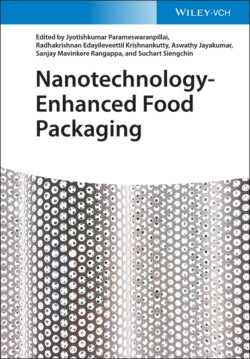Читать книгу Nanotechnology-Enhanced Food Packaging - Группа авторов - Страница 54
3.1.2 Starch Nanomaterials in Food Packaging
ОглавлениеOver the last decades, starch-based nanomaterials have been proposed as fillers in composite polymeric films, as they have shown the capability to improve mechanical, barrier, and electrical properties of the films [6]. They have been used in order to improve properties of biodegradables films made from biodegradables polymers, such as starch, and other carbohydrate polymers, proteins, and lipids; furthermore, some examples can be found of their use in nonbiodegradables composite polymers [38]. Both SNCs and SNPs have been used in order to reinforce mechanical and barrier properties of polymeric films.
According to Le Corre and Angellier-Coussy [6], two types of nanocomposite formation can be distinguished. In the first case aqueous systems and hydrosoluble and hydro-dispersable polymers are grouped. The second group is formed by nonaqueous systems that use organic solvents.
Examples in the first group include the inclusion of SNCs in films formed by natural rubber and latex [39–41]. Likewise, one of the main applications of starch nanomaterials as fillers in polymeric packaging has been in the development of starch-based films. Biodegradable (sometimes edible) films made from starch have been of great interest as they are odorless, tasteless, colorless, nontoxic, and semipermeable to moisture, gases (carbon dioxide and oxygen), and flavor components [42]. However, they have shown high water solubility and poor water vapor barrier due to their hydrophilicity; furthermore, their mechanical properties are poor, with low tensile strength and elongation values [43–45]. Studies have shown that due to their small size, SNCs can interact with the polymeric matrix by forming strong hydrogen bonds. This interaction allows the transfer of stress from the matrix to the nanoparticles that carries the load and enhances the film's strength. Furthermore, water vapor barrier values decreased due to the tortuous path created by the SNCs on the polymeric film, stopping water vapor transmission though the film [26, 31, 46–48]. These behaviors have also been observed in protein films reinforced with starch-based nanomaterials. Soy protein films reinforced with citric acid modified SNPs showed an increase on their tensile strength and water resistance, as nanoparticles created a hydrophobic surface [49, 50]. This was also observed for amaranth protein films [51–53].
